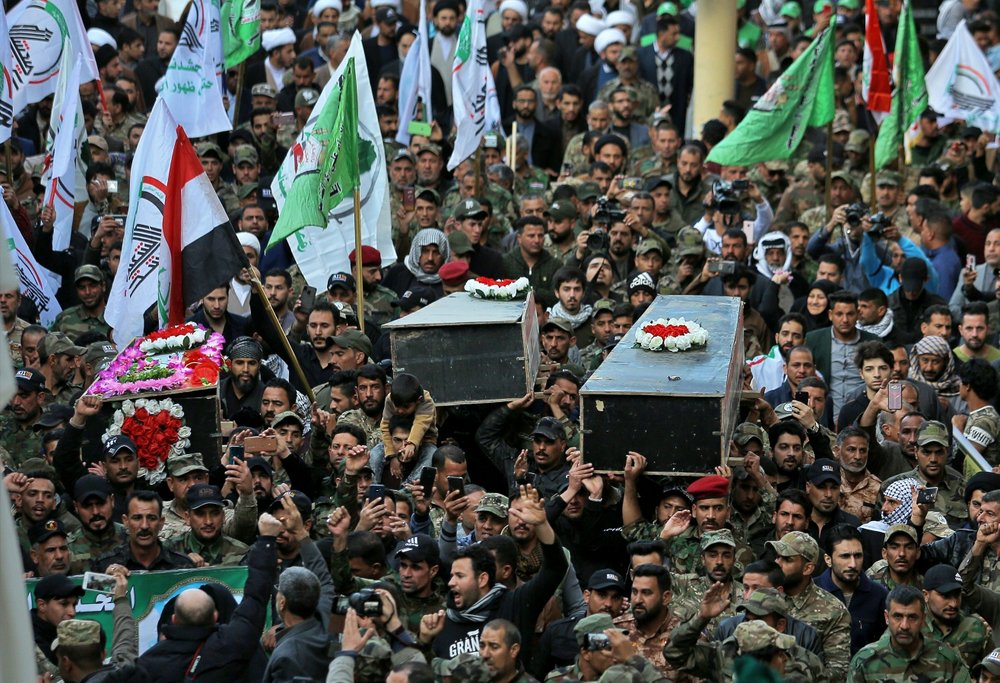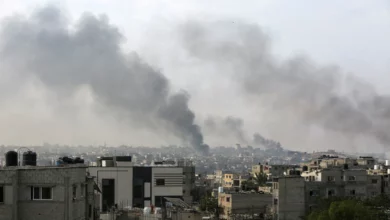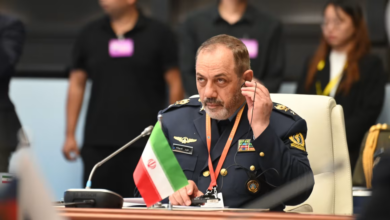
Iran emerged as a major power broker in Iraq after the American invasion in 2003, supporting Shia Islamist parties and militias that have dominated the country ever since.
Worries are increasing that the militias could drag Iraq into the growing proxy war between the U.S. and Iran in the Middle East. The United States and its ally, Israel, are targeting pro-Iranian militias across Lebanon, Syria and Iraq with economic sanctions and airstrikes hitting their bases and other infrastructure.
Iran also supports many of the militias that mobilized in 2014 to battle the Islamic State group, gaining outsized influence as militiamen joined security forces and U.S. troops to defeat the extremists. Those state-sanctioned, mainly Shia militias, known as the Popular Mobilization Forces, have grown into a powerful political faction estimated to have the most seats in the Iraqi parliament.
Iraq has long struggled to balance its ties with the U.S. and Iran, both allies of the Iraqi government but regional archenemies. The Iraqi government angrily condemned the U.S. airstrikes this week against an Iran-backed militia, Kataeb Hezbollah, which is part of the Popular Mobilization Forces. The U.S. blames Kataeb for a string of unclaimed attacks targeting U.S. bases in Iraq, including one that killed an American contractor this week. The apparent decision by Iraqi security forces not to prevent supporters of the militia from breaking into the U.S. Embassy compound in retaliation signaled a sharp deterioration of U.S.-Iraq relations.
The Popular Mobilization Forces is an umbrella group for a number of Iran-backed militias that include the Imam Ali Brigades and Sayed al-Shuhada. The PMF is practically run by Abu Mahdi al-Muhandis, a military commander who has been designated a terrorist by Washington.
The Badr Organization is one of the largest groups within the PMF. Its chief, Hadi al-Amiri, also leads the the powerful Fatah bloc in parliament. The other main parliamentary bloc is led by populist Shia cleric Moqtada al-Sadr, who has aimed to realign himself with recent anti-government protests opposing Iranian influence in Iraq.
Qais al-Khizali, who is on a U.S. terror list, heads the Iranian-backed Shia militia, Asaib Ahl al-Haq, or League of the Righteous. He rose to prominence as a leader in the Shia insurgency after the 2003 U.S.-led invasion. He has called for U.S. troops to leave Iraq now that the Islamic State group has been largely defeated.
Asaib Ahl al-Haq, which owns its own TV station, made significant gains in last year’s elections, and al-Khazali is now represented by a 15-member bloc in parliament. Al-Khazali’s forces fought in Syria alongside President Bashar Assad’s troops.
The Iran-backed groups have also become the target of popular anger in Iraq. Anti-government protests that began in October have swept the country’s largely Shia south, with demonstrators demanding an end to Iranian influence in Iraqi affairs.
Reporting by Associated Press
Image: Mourners carry the coffin of Iran-backed Popular Mobilization fighters killed in the U.S. airstrike in Qaim, during their funeral in Najaf, Iraq, Tuesday, Dec. 31, 2019. Dozens of angry Iraqi Shia militia supporters broke into the U.S. Embassy compound in Baghdad on Tuesday after smashing a main door and setting fire to a reception area. The embassy breach followed deadly U.S. airstrikes on Sunday that killed 25 fighters of the Iran-backed Kataeb Hezbollah militia. The U.S. military said the airstrikes were in retaliation for last week’s killing of an American contractor in a rocket attack on an Iraqi military base that it had blamed on the militia (AP Photo/Anmar Khalil)




